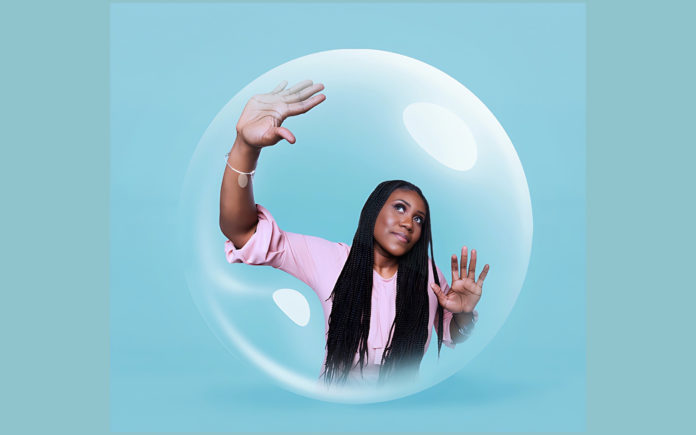

Norélice Mboutou discovered her love for art in the Republic of the Congo while working with Aurélie Diansayi.
“When I was younger, I was working with one of the greatest artists back in Congo and she taught me about art and painting techniques,” she said.
Mboutou moved to Moncton, N.B. in 2009 to study electrical engineering, but she soon discovered a love for graphic design. When she arrived, she didn’t realize she could study the craft here.
“I really liked electrical engineering and mathematics, but that’s the other part of my brain … I wasn’t thinking about doing graphic design all my life,” said Mboutou.
She later jumped at the chance to pursue it at College Communautaire du Nouveau-Brunswick and now works full-time as a graphic designer and considers herself a part-time fine artist.
Two of Mboutou’s pieces of digital art were chosen to be a part of the New Brunswick Black Lives Matter (NBBLM) permanent art collection, curated in partnership with the New Brunswick College of Craft and Design.
The collection exists digitally on NBBLM’s website as well as being displayed in its office in Saint John. The art collection began in 2022 and the call for artists to submit pieces is still ongoing.
Mboutou’s two pieces in the collection are called “Black HAIRitage” and “Black Community Gathered Together.”
“I’m inspired by my African background and my life here in Canada. I want people to feel something when they are looking at my art … art can bring people together and make us feel like a community,” she said.
She explained that when she lived in the Congo, all she knew were Congolese people, it was when she came to Canada that she got to know the greater Black community. In her piece, “Black Community Gathered Together,” she wanted to convey strength and the unity.
“I wanted to celebrate Black culture and its diverse figures, the traditional clothing and remind Black communities of the ongoing fight against discrimination,” said Mboutou.
She chose not to give the figures in the image facial features to show that they represent the whole of the Black community.
The title of her second piece featured in the art collection, “Black HAIRitage,” was also the title of a solo exhibit she held in September. Mboutou explained that she was very inspired by the act of getting one’s hair done and all the different styles and types.
“I wanted to celebrate the rich history and culture of Black hair. How they can face discrimination and resistance because of their hair and they have to reclaim and celebrate their natural hair as a symbol of pride and cultural identity.”
